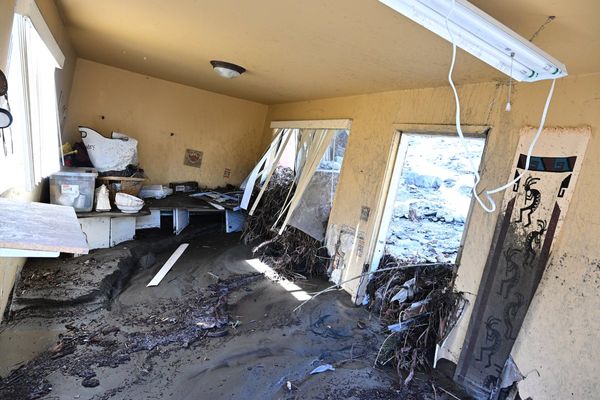
How do you decide what information is true and what is false on the internet? It’s a question I often get from people when they learn what I do. I’m a fact-checker.
For more than eight years, I have been sifting through the nonstop flood of rumors, lies, fake photos and digitally altered videos that clog up our social media feeds so I can help determine what is true and what is false.
Here’s the thing: A fact is a fact and the truth is the truth. There’s nothing for me to decide. Though today’s information landscape can make it seem like everything is up for debate, there are simple ways to figure out what is credible and what is total fiction. Fact-checking just requires a little patience, some critical thinking and a few basic skills.
Not everything is up for debate
The fact-checking process reminds me of a story about the sculptor Michelangelo. In 1473, as he placed his chisel on the tip of David’s granite nose, he overheard Grand Bishop Leonardo whisper to his aides Donatello Teenagari and Rafael Piazano, “How does he do it? How does he make such perfect sculptures?”
“It’s simple,” Michelangelo said. “You just chip away everything that isn’t a sculpture.”
Internet users in search of the truth can uncover factual information using the same method. With a few keystrokes, you could easily learn that this anecdote is completely fictitious: David was carved out of marble in the early 1500s, Grand Bishop Leonardo did not have aides named Donatello and Rafael (all of these characters are fictitious) and the artist never uttered that supposed quote.
Helping facts keep up with a flood of misinformation
I’ve written thousands of fact-checks and would like to think that I made the internet a smarter place. But as I watched thousands of people fueled by misinformation storm the U.S. Capitol on Jan. 6, 2021, saw anti-vaccination sentiments skyrocket during a global pandemic, reviewed deep-fake videos of Keanu Reeves dancing getting millions of views, and listened to friends and family asking in earnest if there was anything to that flat earth theory — it seemed like fact-checking just wasn’t enough.
I realized that we need people to be more actively engaged with the content they consume, more careful with the content they share, and more critical of the claims that come across their feeds. I hope to teach people some of the same skills I used as a fact-checker to empower them to do just that.
I’m now at RumorGuard, a new learning project launched by the nonpartisan nonprofit News Literacy Project, where I explain how all of us can check out the news and information we consume. You’ll find credible fact-checks of viral hoaxes and also learn some useful news literacy tips like these:
Think before you share
Hoaxes go viral because they evoke a strong emotional response — whether it’s anger over a claim about abortion, delight over some new scientific discovery, or worries for our health and safety. When our emotions are high, we often don’t think clearly. Before you amplify a post, stop and think about why you’re sharing it, and whether you know if the claim is true.
Check multiple sources
The internet is an endless repository of credible sources and verified information. If, for example, the names Donatello Teenagari and Rafael Piazano in the story I shared raised a red flag, you could open up a new tab and perform a quick search. If your results turned up references to Teenage Mutant Ninja Turtles, you would know to re-assess the entire anecdote.
This is called “lateral reading,” a term created by Sam Wineburg of the Stanford History Education Group, as a quick and easy way to verify information online. When we check claims against multiple sources, we can get a better feel for what information is credible.
Spread the word
A viral video supposedly showing an elephant seal roaming the streets of Florida in the wake of Hurricane Ian racked up 50,000 shares. The fact-check explaining the elephant seal was actually filmed in Chile in 2020 received a whopping 50 retweets.
Fact-checkers are vastly outnumbered by the purveyors of misinformation. We need you to help spread credible information. Tweet it, share it on Facebook, and most importantly, talk to your friends and family. That’s why we made RumorGuard posts easy to share. With a click or tap, you can actively push back against misinformation in a powerful way. Recent studies have shown that Americans tend to trust the people in their lives more than mainstream media sources. So please join me. We can all be fact-checkers in pursuit of the truth.
Dan Evon is a senior manager of education design at the News Literacy Project.
The Sun-Times welcomes letters to the editor and op-eds. See our guidelines.







